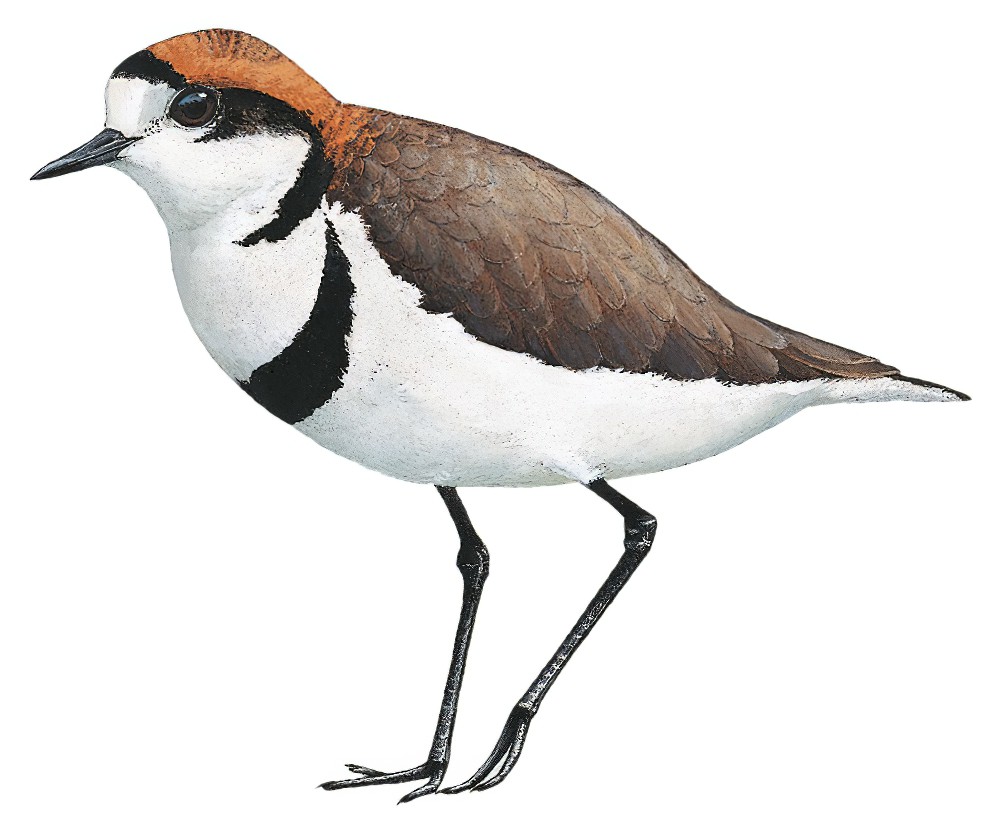Two-banded Plover / Charadrius falklandicus

Two-banded Plover
SCI Name:
Protonym: Charadrius falklandicus IndexOrn. 2 p.747
Taxonomy: Charadriiformes / Charadriidae / Charadrius
Taxonomy Code: twbplo1
Type Locality: Port Egmont, Falkland Islands, based on Portlock, Voy. round World, p. 36 and pi.
Author: Latham
Publish Year: 1790
IUCN Status: Least Concern
DEFINITIONS
CHARADRIUS
(Charadriidae; Ϯ Ringed Plover C. hiaticula) Late L. charadrius yellowish bird mentioned in the Vulgate Bible (late 4th century) < Gr. χαραδριος kharadrios unknown plain-coloured nocturnal bird that dwelt in ravines and river valleys < χαραδρα kharadra ravine. According to some authors the sight of it was said to cure jaundice. Early identifications included the Stone-curlew Burhinus oedicnemus; "79. CHARADRIUS. Rostrum teretiusculum, obtusum. Pedes tridactyli." (Linnaeus 1758); "Charadrius Linné, Syst. Nat., ed. 10, 1, 1758, p. 150. Type, by tautonymy, Charadrius hiaticula Linné. (Charadrios s. Hiaticula Aldrovandus, prebinomial specific name in synonymy.)" (Peters, 1934, II, p. 245). Linnaeus's Charadrius comprised eleven species (C. cristatus, C. Hiaticula, C. alexandrinus, C. vociferus, C. ægyptius, C. Morinellus, C. apricarius, C. Pluvialis, C. Oedicnemus, C. Himantopus, C. spinosus).
Var. Charadrias, Charadias.
Synon. Aegialeus, Aegialitis, Aegialophilus, Afraegialis, Afroxyechus, Cirrepidesmus, Eupoda, Eupodella, Helenaegialus, Hiaticula, Hyetoceryx, Leucopolius, Neocharadrius, Nesoceryx, Ochthodromus, Oxyechus, Pagoa, Pagolla, Paroxyechus, Pernettyva, Pipus, Pluviorhynchus, Podasocys, Zonibyx.
falklandica / falklandicus
Falkland Is. (Falkland Sound named after Anthony Cary 5th Viscount Falkland (1656-1694) MP, Treasurer of the Navy 1681-1689, First Lord of the Admiralty 1693-1694).
● ex “Caille des isles Malouines” of d’Aubenton 1765-1781, pl. 222, and “Malouine Quail” of Latham 1783 (syn. Attagis malouinus).
● ex “Rusty-crowned Plover” of Portlock 1789 (Charadrius).
UPPERCASE: current genus
Uppercase first letter: generic synonym
● and ● See: generic homonyms
lowercase: species and subspecies
●: early names, variants, mispellings
‡: extinct
†: type species
Gr.: ancient Greek
L.: Latin
<: derived from
syn: synonym of
/: separates historical and modern geographic names
ex: based on
TL: type locality
OD: original diagnosis (genus) or original description (species)












